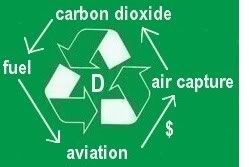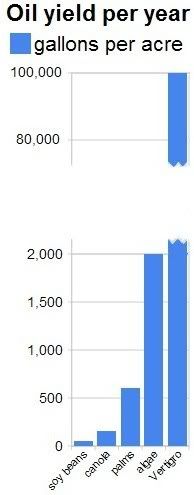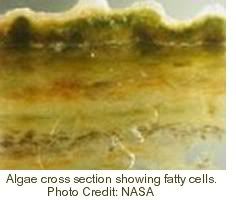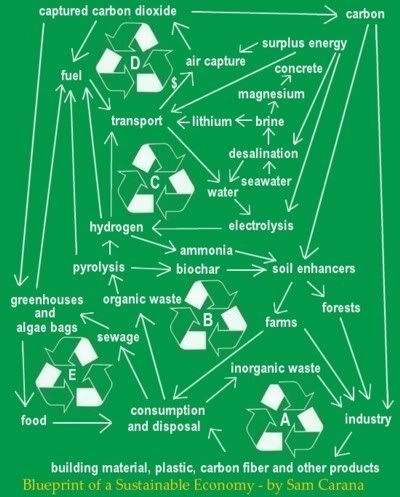Technologies to remove carbon dioxide from the atmosphere
The Virgin Earth Challenge is a prize of $25m for whoever can demonstrate to the judges' satisfaction a commercially viable design which results in the removal of anthropogenic, atmospheric greenhouse gases so as to contribute materially to the stability of Earth’s climate.
Among the 11 shortlisted organizations are:
- biochar (Biochar Solutions, Black Carbon and Full Circle Biochar)
- carbon capture, particularly from ambient air (Carbon Engineering, Kilimanjaro Energy and Climeworks)
- enhanced weathering (Smart Stones)
How effective each technology is in one area is an important consideration; importantly, each such technologies can also have effects in further areas.
Further areas
Global warming is only one out of multiple areas where action is required; an example of another area is the hole in the ozone layer over Antarctica; effective action has already been taken in this area, but the growing hole in the ozone layer over the Arctic shows that further action is necessary.
A safe operating space for humanity is a landmark 2009 study by Rockström et al. It identifies nine essential areas where sustainability is stressed to the limits, in three cases beyond its limits.
The table below shows these nine areas on the left, while technologies that could be helpful in the respective area feature on the right.
As said, each of technologies may be able to help out in multiple areas. As an example, by reducing carbon dioxide levels in the atmosphere, biochar and carbon air capture can also indirectly reduce carbon dioxide in oceans and thus help out with ocean acidification. Enhanced weathering could additionally reduce carbon dioxide in the oceans directly, thus presenting itself even more prominently as a proposal to achieve sustainability in this area.
Similarly, algae bags located in the mouth of a river could help out in multiple areas. They could produce biofuel and thus help reduce aviation emissions, while in the process catching fertilizer runoff, thus reducing emissions of nitrous oxide (the largest ozone-depleting substance emitted through human activities in a 2009 NOAA study) and also reducing depletion of oxygen in oceans.
| 1. Climate Change | CDR: biochar, carbon air capture, enhanced weathering, algae bags, EVs, renewable energy, clean cooking & heating, LEDs, etc. SRM: surface and cloud brightening, release of aerosols AMM: methane capture, oxygen release, river diversion, enhanced methane decomposition | |
| 2. Ocean acidification | enhanced weathering | |
| 3. Stratospheric ozone depletion | oxygen release | |
| 4. Nitrogen & Phosphorus Cycles | algae bags, biochar, enhanced weathering | |
| 5. Global freshwater use | desalination, biochar, enhanced weathering | |
| 6. Change in land use | desalination, biochar, enhanced weathering | |
| 7. Biodiversity loss | desalination, biochar, enhanced weathering | |
| 8. Atmospheric aerosol loading | biochar, EVs, renewable energy, clean cooking & heating, LEDs, etc. | |
| 9. Chemical pollution | recycling, waste management (separation) |
Implementing the most effective policies
Policy support for such technologies is imperative. Just like some technologies can help out in several areas, some policies can cover multiple areas. As an example, a policy facilitating a shift to cleaner energy can both reduce greenhouse gases and aerosols such as soot and sulfur. Sulfur reflects sunlight back into space, so reducing sulfur emissions results in more global warming, but conversely global warming can be reduced by releasing sulfur over water at higher latitudes.
How many different policies would be needed to support such technologies? What are the best policy instruments to use?
Traditionally, government-funded subsidies and standards have been used to contain pollution, sometimes complemented with levies and refundable deposits; this can also work for chemical pollution. Standards have also proven to be effective in reducing the impact of CFCs on the ozone layer, while - as said - policies could at the same time also be effective in other areas, in this case reducing the impact of CFCs as greenhouse gases.
However, standards don't raise funding for support of such technologies, while taxpayer-funded subsidies make everyone pay for the pollution caused by some. Hybrid methods such as cap-and-trade and offsets are prone to corruption and fraud, which compromises their effectiveness. Local feebates are most effective in facilitating the necessary shifts in many areas.
Two sets of feebates
To facilitate the necessary shift away from fuel toward clean energy, local feebates are most effective. Fees on cargo and flights could fund carbon air capture, while fees on fuel could fund rebates on electricity produced in clean and safe ways. Fees could also be imposed on the engines, ovens, kilns, furnaces and stoves where fuel is burned, to fund rebates on clean alternatives, such as EV batteries and motors, solar cookers and electric appliances. Such feebates are pictured as yellow lines in the top half of the image below.
Support for biochar and olivine sand could be implemented through a second set of feebates, as pictured in the bottom half of the image below. Revenues from these feebates could also be used to support further technologies, as described in the paragraph below.
Further technologies should be considered for their effectiveness in specific areas, including:
- release of oxygen to help combat methane in the Arctic and to help combat loss of stratospheric ozone
- use of plastic sheets to capture methane
- use of radio waves to enhance methane decomposition
- diversion of water from rivers to avoid warm water flowing into the Arctic Ocean
- release of aerosols over water at higher latitudes
- surface & cloud brightening to reflect more sunlight back into space
Professor Schuiling proposes olivine rock grinding
Comments
What works best is implementation of feebates that put in place combinations of local financial incentives and disincentives, as illustrated by the image on the right.
Energy feebates, working in a parallel yet complimentary way, can clean up energy supply within a decade, while feebates as pictured above can continue to bring carbon dioxide levels in the atmosphere back to 280 ppm, as well as bring down carbon dioxide levels in the oceans.
Rock grinding should be part of a comprehensive policy that also includes replacing fuel with renewable energy and support for biochar. The latter is also discussed in the posts Biochar and The Biochar Economy.
As the above diagrams try to show, biochar and olivine sand can be combined in soil supplements, to help bring carbon dioxide levels in the atmosphere back to 280ppm. Rebates could be financed from fees on nitrogen fertilizers, livestock products and Portland cement.
Enhanced weathering is possible with other types of rock, but more easily done with olivine. The paper Olivine against climate change and ocean acidification includes the map below with the global distribution of dunite massifs. By removing their lateritic overburden, the underlying dunites (rocks that consists of > 90% olivine) can be mined.
As the image on the right shows, there's no need for long distance transport. One dot often represents several dunites and olivine is available in abundance at many places across the globe.
The benefits are great and this looks like one of the most economic ways to bring down carbon dioxide levels.
The energy can come from wind energy, which is clean, price-competitive and available in abundance in many places. Rock grinding, the transport and distribution can be largely automated, and take place predominantly at off-peak hours, while wind energy can be supplied very economically at off-peak hours.
Olivine sand can also be combined well with biochar, as soil supplement. Have a look at the post the Biochar Economy.
Further reading:
Feebates
Biomass
Carbon Air Capture and Algae Bags
Enhanced weathering
Oxygenating the Arctic
Ozone hole recovery
Enhanced methane decomposition
Desalination
Vortex towers could vegetate deserts
Carbon-negative building
LEDs: When will we see the light?
Thermal expansion of the Earth's crust necessitates geo-engineering
Towards a Sustainable Economy
The way back to 280 ppm






 Additionally, the aviation industry can offset emissions, e.g. by funding air capture of carbon dioxide. The carbon dioxide thus captured could be partly used to produce fuel, which could in turn be used by the aviation industry, as pictured on the left. The carbon dioxide could also be used to assist growth of biofuel, e.g. in greenhouses.
Additionally, the aviation industry can offset emissions, e.g. by funding air capture of carbon dioxide. The carbon dioxide thus captured could be partly used to produce fuel, which could in turn be used by the aviation industry, as pictured on the left. The carbon dioxide could also be used to assist growth of biofuel, e.g. in greenhouses.
 Apart from growing algae in greenhouses, we should also consider growing them in bags. NASA scientists
Apart from growing algae in greenhouses, we should also consider growing them in bags. NASA scientists  The NASA article conservatively mentions that some types of algae can produce over 2,000 gallons of oil per acre per year. In fact, most of the oil we are now getting out of the ground comes from algae that lived millions of years ago. Algae still are the best source of oil we know.
In the NASA proposal, there's no need for land, water, fertilizers and other nutrients. As
The NASA article conservatively mentions that some types of algae can produce over 2,000 gallons of oil per acre per year. In fact, most of the oil we are now getting out of the ground comes from algae that lived millions of years ago. Algae still are the best source of oil we know.
In the NASA proposal, there's no need for land, water, fertilizers and other nutrients. As 
 A 2007
A 2007 